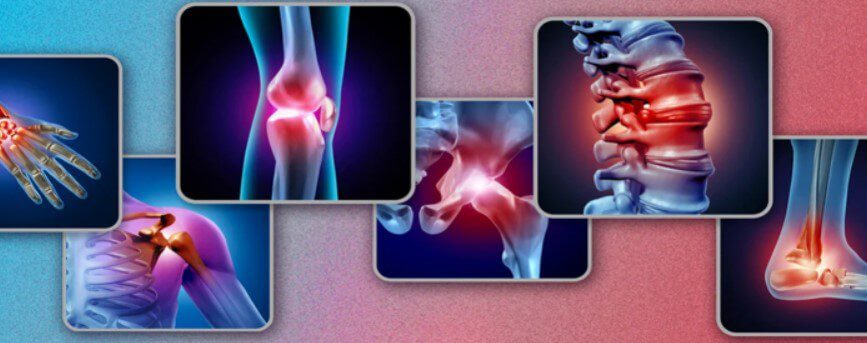
by Stemedix | May 13, 2024 | ALS, Neurodegenerative Diseases, Regenerative Medicine, Stem Cell Research, Stem Cell Therapy
Amyotrophic lateral sclerosis (ALS) is a progressive neurodegenerative disease. Patients with this condition often experience a broad range of symptoms that get worse over time. While there’s no known cure, some interventions and regenerative therapies can be helpful.
If you or a loved one has been diagnosed with ALS, it’s important to seek as much information as possible. That way, you can get the proper treatment and know what to expect as the disease manifests in your body. Here’s everything you need to know to be prepared for ALS.
Lou Gehrig’s Disease: The Neurological and Muscular Effects
ALS is also known as Lou Gehrig’s disease. Unfortunately, it has severe effects on your nervous system and muscular function as it progresses.
Amyotrophic lateral sclerosis primarily affects your body’s motor neurons, which are responsible for dictating voluntary movements. Toward the end of the disease’s progression, involuntary movements like breathing can slow or stop entirely.
When your motor neurons can no longer communicate with your muscles properly, your muscles start to waste away. This is called muscular atrophy. Once a muscle has atrophied, it no longer has enough tone to carry out normal movements.
Since ALS is a progressive neurodegenerative disease, the symptoms get worse over time. In the later stages of the disease, ALS patients have trouble speaking, eating, swallowing, and making any voluntary movements at all.
Who Gets ALS? Risk Factors and Genetic Components
Amyotrophic lateral sclerosis is usually a sporadic disease, meaning patients get it randomly without an obvious known cause. In some cases, although very rare, Amyotrophic lateral sclerosis is passed down through families.
Genetic ALS stems from genetic mutations that are then passed on to children of affected parents. These cases only make up 10% or less of all ALS cases.
Sporadic ALS may have certain risk factors, but there are no clear causes. This means scientists can’t yet point to a single cause of developing ALS if it’s not genetic.
Possible Risk Factors for Sporadic Amyotrophic lateral sclerosis
Some loose associations between age, sex, and occupation have been made in relation to Amyotrophic lateral sclerosis cases. The presence of these risk factors does not guarantee that someone will develop ALS.
These possible risk factors include:
- Age: Being 55 to 75 years old
- Sex: Early-life cases are most common in men
- Military service: Veterans may be at higher risk
One possible reason that military veterans are at higher risk for Amyotrophic lateral sclerosis is because of their exposure to toxins like pesticides. Being around harmful chemicals may contribute to the development of this debilitating disease, but scientists aren’t sure of this.
The First Signs of ALS
There are two types of ALS onset — limb onset and bulbar onset. Limb-onset Amyotrophic lateral sclerosis affects your arms or legs or both at the same time. You may notice problems with coordination, fine motor control, walking, and using your hands.
Bulbar-onset ALS first affects the neurons that control your speech and swallowing abilities. You might notice difficulty getting your words out properly or trouble swallowing.
It doesn’t take long for the beginning symptoms of ALS to spread and get worse. This is often how physicians diagnose ALS, as rapidly progressing symptoms usually indicate a serious neurological problem.
Progressive Problems and More Serious Symptoms
As ALS develops, symptoms can become severe and even debilitating. Some patients experience changes seemingly overnight, while others develop more serious symptoms over weeks or months.
The neuron degeneration caused by ALS can start to interfere with essential body functions such as breathing, blinking, and swallowing.
Respiratory Symptoms
Respiration problems are common in end-stage ALS. The muscles in your chest that support breathing may become weak or paralyzed entirely.
Some respiratory symptoms of ALS include:
- Shortness of breath (at rest)
- Excess saliva
- Inability to clear your throat and lungs of mucus
- Pneumonia
- Weak coughing
- Worsened breathing when lying flat
- Respiratory system failure
Hospital interventions usually include ventilators to keep air flowing in and out of the patient’s lungs.
Muscle Stiffness and Atrophy
As Amyotrophic lateral sclerosis interferes with their proper use, your muscles start to lose tone, mobility, and structure. This is known as muscle atrophy and may be accompanied by extreme stiffness.
As Amyotrophic lateral sclerosis progresses, many patients lose the ability to speak loudly. The muscles involved in speech start to freeze up and become paralyzed. This can also cause an inability to swallow.
Extreme Weight Loss
Being unable to consume food and fluids normally can lead to excessive weight loss in late-stage Amyotrophic lateral sclerosis patients. This isn’t a healthy type of weight loss, and it’s usually caused, in part, by loss of muscle mass.
Mental Health Challenges
Amyotrophic lateral sclerosis doesn’t affect your perception or cognition, meaning you can still hear, see, and think normally. Since the person is aware of their deteriorating condition, they may experience depression, anxiety, and other serious mental health challenges. Having a strong support system is key to remaining mentally well through your ALS journey.
Treatment Options for ALS
You can receive treatment for ALS to slow the progression of the disease. While there is no cure, medical intervention can help you maintain your quality of life for a longer period.
ALS Medication
Some medications protect your motor neurons from further damage, which slows the progression of your ALS symptoms. These medications won’t revive damaged or dead neurons, but they can improve your disease prognosis.
Physical and Occupational Therapy
Therapies that involve movement and motor functioning can help you maintain your muscle tone and avoid stiffness. While you still have the ability to move your limbs and smaller muscles, it’s crucial to practice doing so as much as possible. This repetition helps your brain and body stay in a good rhythm and slow motor damage.
Regenerative Medicine
Some innovative treatments, like stem cell therapy for ALS, may improve your quality of life. Regenerative medicine focuses on healing and repairing damaged tissues and cells.
Stem cell therapy uses unspecialized human cells to serve specific purposes throughout the body. In the case of ALS, stem cells are administered so they can differentiate into nerve cells to assist with your functioning and comfort. This may be worth considering if you want to approach your ALS symptoms from all possible angles.
Living With Purpose: Life After an ALS Diagnosis
It’s important to maintain a positive outlook as much as possible. Having the support of medical professionals, family, and friends can make all the difference in your quality of life with Amyotrophic lateral sclerosis. Try not to lose hope; science is progressing toward new treatments every day.

by Stemedix | Apr 29, 2024 | Cardiovascular Disease, Health Awareness, Heart Failure, Kidney Disease, Mesenchymal Stem Cells, Regenerative Medicine, Stem Cell Therapy
You might think of kidney health problems as separate issues from your blood pressure. However, renal hypertension, a form of high blood pressure, can be just as serious as cardiovascular health conditions.
It’s important to understand the link between kidney function and blood pressure. Once your kidneys become compromised, the damage isn’t reversible. Know the signs, symptoms, and treatment options related to renal hypertension so you can maintain your kidney health as long as possible.
How Renal Hypertension Develops
Your kidneys work with the rest of your body to maintain your blood pressure, fluid and sodium balance, pH levels, and more. When either your kidneys or the rest of your body is thrown out of balance, the other can suffer.
Narrowed Kidney Arteries
Renal hypertension has the same cause as standard high blood pressure — the narrowing of arteries. With this disease, the arteries that are most compromised are the ones that lead into your kidneys. This can be very dangerous if left untreated.
Many different factors can cause narrowed kidney arteries, including atherosclerosis (plaque buildup), scarring due to general hypertension, and others. When this happens, you’re at an increased risk of developing renal hypertension.
Your Kidneys’ Response
When your kidneys aren’t getting enough blood flow — which is a common issue when your arteries narrow — they release certain hormones. These hormones cause your blood pressure to rise in an attempt to get more blood flowing to your kidneys.
The Vicious Cycle of Renal Hypertension
Renal hypertension is a real problem, particularly if it progresses for a long time. Once your kidney blood flow is compromised, your kidneys stop working as efficiently.
One of the primary functions of your kidneys is to balance sodium and water levels in your body. Compromised kidneys won’t filter sodium out of your system as effectively. When there’s too much sodium circulating, you experience high blood pressure, and the hypertension cycle continues.
Chronic hypertension can contribute to the development of kidney disease, which has no cure. Many experts consider kidney disease to be the root cause of renal hypertension, but general hypertension plays a large role as well.
Common Signs and Symptoms of Renal Hypertension
You might be wondering if this problem will affect you, especially if you’ve already been diagnosed with general hypertension. There are key signs and symptoms to look out for. You should also consult closely with a physician who can monitor your blood and kidney health consistently.
Headaches
In some cases, high blood pressure will cause headaches or migraines. Scientists believe this happens because of changes in the blood-brain barrier. Pressure can build in this region during high blood pressure episodes, leading to discomfort, pain, and migraine headache symptoms.
Vision Changes
Extremely high blood pressure levels can damage the arteries and blood vessels in your eyes. This leads to double vision, blurriness, and general difficulty seeing. If you experience sudden changes in your vision, renal hypertension may be the culprit.
Confusion
Your brain can’t function properly when your blood pressure is too high. This symptom is usually a sign that you’re in a hypertensive crisis and need immediate medical attention. If you start feeling confused, dazed, or mentally foggy, consider renal hypertension as the root cause.
Nausea and Vomiting
Hypertensive crises usually induce nausea and, in some cases, bouts of vomiting. This is another critical symptom to watch for, as it means you need emergency medical treatment.
An Important Note
Renal hypertension, much like general hypertension, usually shows no symptoms. This is why it’s so dangerous, as patients may not know they have this condition until it’s too late. It’s essential to work with a specialist who can keep an eye on your blood pressure and kidney health if you have concerns.
It’s also important to note that kidney problems are mostly irreversible. While there are some promising treatments, like stem cell therapy for kidney disease, there is no known cure yet. Prevention is the key to managing your kidney health.
Potential Treatments for Better Kidney Health
Lifestyle changes and innovative treatments, namely regenerative medicine, may improve your kidney health over time. If your doctor has stated that you don’t need surgery to treat your renal hypertension, stem cell therapy may be right for you.
Lifestyle Changes to Lower Your Blood Pressure
Eating a diet low in sodium and free from added table salt can do wonders for your blood pressure levels. Your doctor may recommend that you make other lifestyle changes, like exercising daily and quitting smoking. These changes take time to get used to, but they can save your kidneys a lot of damage in the long run.
Blood Pressure Medication
This intervention is tricky because a key sign of renal hypertension is rising blood pressure that won’t respond to medication. However, in some cases, your doctor may be able to control your hypertension with a stronger blood pressure drug. This is usually the first line of treatment if you’re unable to make the necessary lifestyle changes.
Surgery
There are both minimally invasive and open surgical procedures for treating renal hypertension. Surgical interventions involve installing a balloon into the affected artery or using healthy tissue from a different artery to repair the damaged one. Either way, these interventions require a surgeon who specializes in these procedures.
Stem Cell Therapy
Regenerative medicine involves using stem cells to treat and protect damaged tissues in the body. Mesenchymal stem cells have shown some promise in treating ischemic kidney disease and restoring health to damaged blood vessels.
Stem cells can be programmed to have anti-inflammatory properties, which reduces tissue damage throughout your body. When the affected area — in this case, your kidneys — receives stem cell therapy, damaged vessels and arteries might slowly heal and regenerate.
Regenerative medicine is drug-free and uses the natural healing properties of “blank” stem cells to assist in wound healing and tissue regeneration. Stem cell treatments may be a good option for treating your renal hypertension if you want to avoid surgery, medication, and other invasive interventions.
Renal Hypertension Prevention, Treatment, and Healing
You have options when it comes to preventing and treating your renal hypertension. Prevention is always the best way to avoid long-term complications. However, don’t be discouraged if the damage is already done. With the right information, you can make an informed decision on caring for your kidneys.

by Stemedix | Apr 22, 2024 | Age Management, Bone Marrow, Health Awareness, Osteoarthritis, Pain Management, Regenerative Medicine, Stem Cell Research, Stem Cell Therapy
As the human body ages, most people assume that “wear and tear” will take over and deplete their health. This isn’t always true, and it’s important to separate fact from fiction when discussing joint health problems.
Osteoarthritis is a painful, inflammatory joint condition that can make it difficult to function. Some folks refer to it as “just” arthritis, but this minimizes the incredible discomfort and damage it causes. Living with this condition can feel impossible at times.
You don’t have to sit back and let joint health problems take over your life as you age. Learn more about osteoarthritis so you can make the best decisions for your health and pain management.
Developing Osteoarthritis: What’s Happening to Your Joints?
Before you can appropriately manage this condition, you must learn what’s happening in your joints. Developing osteoarthritis is not inevitable, but unfortunately, it is common, especially in aging adults.
What Is Osteoarthritis?
Osteoarthritis is an inflammatory joint condition that occurs when the cartilage that supports and connects your bones wears away. As a result, your bones grind together, and the spaces around your joints become inflamed and tender.
Is This Condition Inevitable?
No. Osteoarthritis is not just a “normal” part of aging, nor is it inevitable. As science and research advance, it’s becoming more obvious that osteoarthritis is the result of many risk factors interacting with each other.
Certain risk factors make it more likely that you’ll develop osteoarthritis. Many of them are preventable through lifestyle changes and a proactive approach to protecting your joints.
Who Gets Osteoarthritis?
Age is a big risk factor for osteoarthritis, but again, this condition is not inevitable. Here are some of the risk factors for developing osteoarthritis.
Stress, Strain, and Injury
Any type of strain or stress on your joints can lead to osteoarthritis later in life. Even if your joints feel fine when you’re younger, you’re still at risk if you’ve experienced harsh impacts or prolonged joint strain.
Sports injuries, obesity or being overweight, and physically demanding jobs all put you at a higher risk of developing osteoarthritis. All these risk factors slowly degrade the cartilage between your bones. These tissues can only support lots of impact, weight, or use for so long.
Genetics and Sex
Your genetics play a role in whether you develop joint health problems. Having a family history of osteoarthritis raises your chances of dealing with the same condition.
An estimated 60% of osteoarthritis patients are women. This means that if you were assigned female at birth, you’re at a slightly increased risk of developing osteoarthritis. However, through a healthy lifestyle, you may be able to prevent it.
The Silent Pain of Living with Arthritis
To the outside world, you might appear healthy and fully capable of living your daily life as normal. However, arthritis pain can stop you in your tracks. It can be intense or even disabling.
If your condition gets bad enough, you might find yourself unable to walk around, twist, or pick things up. Osteoarthritis pain is not something to ignore or minimize.
Swelling and Inflammation
The inflammation doesn’t just happen inside your body. Sometimes, your joints may become swollen, tender, and visibly inflamed. When this happens, chances are you can’t move the affected joints much. Any impact, no matter how slight, may throw you into a pain flare.
Crepitus
Some osteoarthritis patients experience a crunching or grinding sensation (crepitus) when moving the affected joints. This can be terrifying and uncomfortable, leading to increased mental stress and physical pain.
Weakness and Limited Mobility
Osteoarthritis causes muscle weakness, fatigue, and limited mobility. You might not be able to move your body in ways that feel good to you or allow you to keep up with others anymore. These limitations not only affect you physically, but they also come with a mental price tag as well.
Stigma and Shame Around Aging
Some people might feel like their osteoarthritis symptoms mean they’re “getting old.” While there should be no shame in aging, social stigmas suggest otherwise. Experiencing these symptoms might make you feel embarrassed about your age.
If you struggle with joint pain, others might not see what you go through. You might feel pressured to “just get over it” or take pain medication to keep up with everyone else. This can also create feelings of shame and contribute to a poor stigma around joint health problems.
Treating Osteoarthritis: Enjoy a Better Quality of Life
Getting an osteoarthritis diagnosis doesn’t mean you’ll never be able to enjoy life and movement again. With the proper therapies, especially early treatment, you can improve your comfort and quality of life. Here are some of the best options for treating osteoarthritis pain and inflammation.
Stem Cell Therapy
Stem cells are at the forefront of regenerative medicine. These cells, also known as “blank” or “programmable” cells, can develop into specialized tissues, like cartilage. This makes them useful for regenerating and healing wounds, damaged tissues, and inflamed areas of your body.
One advantage of stem cell therapy is that it’s drug-free and comes with almost no risks to your health.
Stem cell therapy may also reduce your pain and increase your mobility. It gets to the root cause of your joint problems instead of covering up the symptoms.
Exercise and Physical Therapy
Getting more movement in your day may help reduce the severity of your osteoarthritis symptoms. Regular physical activity prevents the painful stiffness that osteoarthritis patients often experience.
Exercise also assists in weight management, which is key to reducing your joint pain. Every extra pound of body fat adds about four times the amount of pressure onto your joints.
Whether you (gently) exercise on your own or enlist the help of a physical therapist, your joints will thank you for it.
Get the Proper Support for Your Osteoarthritis
Living with osteoarthritis can be challenging, but you’re not alone. There are steps you can take to improve your quality of life with this condition. Evaluate your treatment options to find what works best for you. Visit our website to learn more about osteoarthritis pain.

by Stemedix | Apr 8, 2024 | Age Management, Osteoarthritis, Pain Management, Regenerative Medicine, Stem Cell Research, Stem Cell Therapy
Living with any type of arthritis is painful, debilitating, and frustrating. You miss out on a lot of the physical activities you used to love. This condition can even make it harder to keep up with children and grandchildren.
Your long-term health is worth fighting for. When it comes to osteoarthritis pain management treatments, it’s important to know your options. Here are some pain relief methods to try when managing your osteoarthritis over time.
How Osteoarthritis Develops and Becomes So Painful
The joint pain and inflammation alone can keep you off your feet for days. Along with severe pain, osteoarthritis also causes damage to your cartilage and joints, affecting your mobility and activity levels.
Cartilage Breakdown Leads to Joint Pain
If you’ve dealt with osteoarthritis pain, you might wonder what led you to develop this condition. The root cause of osteoarthritis is cartilage degradation. This means that the rubbery cushion between your bones starts to thin and eventually wear away entirely.
When your joints no longer have adequate cushioning or support between them, they start to rub together. This leads to inflammation, irritation, and intense pain. As the bones rub together, they also break down and lose some of their function.
Risk Factors for Developing Osteoarthritis
There is no single universal cause of osteoarthritis. Certain risk factors can increase your chances of developing this condition. If you have multiple risk factors at once, your chances are even higher.
Some risk factors for developing osteoarthritis include:
These risk factors don’t guarantee you will develop osteoarthritis, but they do play large roles in this condition.
Continuous Inflammation and Discomfort
Osteoarthritis can feel like a never-ending cycle. Once your joints start grinding against one another, you develop inflammation, which leads to even more pain and discomfort.
Over-the-counter anti-inflammatory medications may not resolve your pain, and they certainly don’t treat the root cause of it. In order to experience osteoarthritis relief, you need to prevent the inflammation from occurring in the first place.
At-Home Remedies and Lifestyle Changes
You may be able to control your osteoarthritis pain with lifestyle modifications. This means changing how you move, eat, sleep, and respond to stress in your daily life. Try these at-home therapies and improvements if you want to take the natural pain treatments for osteoarthritis.
Flexibility and Mobility Exercises
You must be careful when exercising with osteoarthritis. Some high-impact activities can make your pain worse. However, strength training, conditioning, and mobility exercises can improve your condition.
Certain stretches and gentle movements can help support your joints and reduce the burden on your bones. This ultimately leads to reduced pain and more mobility over time.
Cold Therapy
Cold temperatures can help reduce inflammation and swelling near your joints. This is because cold conditions trigger a restrictive mechanism in your blood vessels, reducing the blood and fluid supply to the affected areas. If you struggle with inflamed cartilage and joints, cold therapy might be just what you need.
Try applying an ice pack or sitting in an ice bath (with a doctor’s approval) for up to 20 minutes. It’s best to alternate cold and hot applications for the best results.
Heat Therapy
Similar to cold therapy, heat therapy works by changing the blood flow around your inflamed joints and cartilage. Heat opens up your blood vessels, allowing more blood and fluid to reach the affected area. This can supply oxygen, nutrients, and regenerative compounds to your joints.
Alternate applications of hot and cold compresses, using each for up to 20 minutes. You should experience a temporary reduction in swelling and discomfort.
Rest and Sleep
Getting plenty of rest is essential for restoring your joint and cartilage health. Your body needs sleep to rebuild damaged tissues and relieve pain effectively. If your pain is debilitating, try resting the affected area for a few days and catching up on some much-needed shut-eye.
Natural Joint Pain Treatments
From acupuncture to massage, many patients benefit from alternative pain relief therapies. If you want to avoid over-the-counter drugs, these natural pain treatments might be right for you.
Therapeutic Massage
You can perform self-massages at home or go to a licensed professional for these services. Either way, massage has been shown to improve blood circulation to injured areas and relieve some pain and discomfort. You may even notice improvements in your mobility after a restorative massage.
Acupuncture
Acupuncture uses tiny needles to activate trigger points in your body and release tension and pain. Some patients have experienced noticeable improvements in their osteoarthritis pain after regular acupuncture treatments. Contact an acupuncturist to see if this therapy is right for you.
Regenerative Medicine: Stem Cell Therapy for Osteoarthritis Pain
Stem cell therapy is a drug-free alternative you can use to treat your osteoarthritis pain. The potential healing properties of your body’s “blank cells” may lead your joints and cartilage to strength and health again.
How Stem Cells May Relieve Your Pain
Stem cells can be programmed to develop into almost any kind of cell your body needs. In osteoarthritis patients, this means turning them into cartilage tissue.
Stem cells may be able to regenerate damaged soft tissues around your joints, leading to more comfortable movements. This can help you regain some mobility and experience lower pain levels over time.
Low Risk of Side Effects
When you’re dealing with debilitating joint pain, the last thing you want is painful side effects from the treatment you’ve chosen. Stem cell therapy is known for its high safety profile since it uses human cells to regenerate damaged tissues. This means there’s little to no risk of adverse reactions.
Stem cell treatments are fast, generally safe, and potentially very effective at treating osteoarthritis pain. If you want to try a new avenue for joint pain relief, consider regenerative medicine.
Tackle Your Arthritis Pain Your Way
You have the final say in how you treat your osteoarthritis pain. Whether you opt for natural at-home remedies or test out regenerative medicine, what’s important is that you have choices. Take control of your health and mobility again with these pain management treatments for osteoarthritis.

by admin | Apr 4, 2024 | Diabetes, Mesenchymal Stem Cells, Regenerative Medicine, Stem Cell Research, Stem Cell Therapy
According to the World Health Organization, an estimated 422 million people worldwide have diabetes. Numerous studies have demonstrated that people with diabetes are at an increased risk of developing both acute and chronic pancreatitis, which increases the risk of developing pancreatic cancer.
Considering the lack of effective therapeutic options for pancreatitis and the limited treatment options for diabetes, researchers have recently turned to the potential of using mesenchymal stem cells (MSCs) as alternative therapeutic treatment options for these conditions.
In this review, Scuteri and Monfrini evaluate the different uses of MSCs for both the treatment of diabetes and the reduction of diabetes-related disease development.
According to the authors, MSCs offer several advantages, including the ability to be isolated from different tissues in a simple way, the ability to be easily harvested and expanded in vitro, and the absence of ethical problems associated with harvesting and use.
In addition, MSCs demonstrate the ability to differentiate, release soluble factors, and migrate toward lesions and sites of inflammation. Considering that inflammation and apoptosis are significant etiopathological factors of diabetes and pancreatitis, Scuteri and Monfrini indicate that MSCs are excellent candidates for regenerative medicine purposes.
In the case of MSCs and diabetes, research has demonstrated that differentiation of MSCs into insulin-releasing cells has been demonstrated in vitro after direct contact with pancreatic islets; the release of anti-inflammatory and antioxidant factors has improved the engraftment and prolonged the survival of transplanted pancreatic islets; and inhibited the apoptotic pathways triggered by endoplasmic reticulum stress in transplanted pancreatic islets. In analyzing this research, the authors conclude that the potential exists for the safe and effective use of MSCs for treatment of diabetes.
Although there has been growing interest in exploring the potential of MSCs on pancreatitis, there have only been a few studies exploring this therapeutic option. In these studies, the presence of MSCs was observed to reduce fibrosis and parenchymal damage by reducing proinflammatory factor expression.
In regard to MSCs and pancreatic cancer, since diabetes and pancreatitis are risk factors for the development of pancreatic cancer and considering MSCs have been found to hold potential as a therapeutic option for these diseases, using MSCs to interrupt the flow of factors leading to the development of pancreatic cancer should lower the incidence of diabetes-related pancreatic cancers.
The authors conclude that MSCs are a very promising therapeutic option for the treatment of diabetes, pancreatitis, and pancreatic cancer.
Source: “Progress in exosomes and their potential use in ocular diseases.” 18 Sep. 2020, https://www.ncbi.nlm.nih.gov/pmc/articles/PMC7459212/.

by Stemedix | Apr 1, 2024 | Stem Cell Research, Age Management, Mesenchymal Stem Cells, Regenerative Medicine, Stem Cell Therapy, Studies
According to the Centers for Disease Control and Prevention, four million adults in the United States have fibromyalgia. It’s an often-misunderstood condition that leads to systemic joint and muscle pain, along with fatigue, making daily life very difficult. To deal with the pain the condition causes, it’s important to understand why it occurs. Learn more about fibromyalgia and your pain management options.
What Is Fibromyalgia? Symptoms and Causes
Fibromyalgia is a condition that leads to pain and tenderness all over the body. It’s a chronic condition, though symptoms tend to come and go. During flare-ups, the pain can be significant enough to interfere with daily life while also affecting sleep, leading to mental and physical distress.
During a flare-up, you can experience:
- Fatigue
- Pain
- Headaches
- Face and jaw pain
- Bladder control issues
- Digestive problems
- Insomnia
It’s not clear what causes fibromyalgia, but scientists have found that certain conditions, as well as stress, can trigger it. You are also more likely to have this condition if you have a relative who suffers from it. Women are twice as likely as men to develop it.
People living with conditions like arthritis, depression, anxiety disorders, and irritable bowel syndrome are more likely to develop fibromyalgia.
Fibromyalgia can affect people of all ages, including children, but it’s more common in those who are middle-aged.
Diagnosing Fibromyalgia
If you’re experiencing symptoms, your doctor will likely perform a physical exam and discuss your medical history. There’s no test that can officially diagnose fibromyalgia, so your doctor will do what’s called a differential diagnosis — a kind of investigation that functions via a process of elimination.
Your doctor may order blood work to check hormone levels and look for signs of inflammation to help eliminate other diseases.
During the physical examination, your doctor will likely check for the presence or absence of tender spots by using light pressure.
Most of the time, if you have generalized pain that lasts for three months or more without any other underlying conditions, you’ll receive a diagnosis of fibromyalgia. The pain has to be spread throughout your body to get this diagnosis.
Treating Fibromyalgia: What You Can Expect
There isn’t one treatment that works for everyone. Usually, your doctor will try a number of different options, combining them to offer the most effective results.
Your provider will likely treat the condition depending on the symptoms you’re currently experiencing. There are stages of treatment, though these aren’t treatment plans that can be followed in order because the condition can affect you differently during every flare-up.
Exercise to Loosen Muscles
In some cases, turning to physical exercises, including stretching, can help loosen your muscles and ease some of the discomfort.
Low-impact exercises like walking and swimming help build flexibility that can improve your movement during flare-ups while simultaneously helping manage pain with the release of endorphins they stimulate. Exercise may also help you get better sleep.
Medications for Symptom Management
Over-the-counter medications can help manage pain, as can narcotics, though your doctor will prescribe these with care since they can lead to dependence.
Antidepressants can often also help the process, easing some of the fatigue and pain. For those who have trouble sleeping because of fibromyalgia, sleeping aids are often a good choice.
Heat and Cold Therapy for Milder Pain
In some cases, heat and cold therapy is also effective in managing some symptoms, especially if they’re mild. Alternating hot and cold packs helps the muscles release some of the tension that could be causing pain.
Occupational Therapy for Everyday Tasks
Turning to an occupational therapist is a great way of finding out how to restructure your life when you experience flare-ups. This type of therapist can help make adjustments to your work areas while also helping you find better ways of performing certain tasks so that you experience fewer symptoms.
Massage and Acupuncture to Improve Range of Motion
Massage therapy is a trusted technique. It relies on the manipulation of your muscles and soft tissues, increasing blood flow and improving range of motion while helping reduce pain. For many, it helps relieve stress, too, which can impact the severity of the symptoms.
Acupuncture is also helpful, with the needles affecting blood flow levels and even how certain neurotransmitters in the brain work.
Lifestyle Changes for Flare-Up Reduction
Making changes to your everyday life is an important way of helping minimize the symptoms of flare-ups, so try to incorporate some into your daily life. The right options can depend on your preferences. Some people turn to meditation, while others prefer to do breathing and mindfulness exercises.
Regenerative Medicine to Handle Inflammation
One option people choose to try because of its promise is regenerative medicine.
The variety of treatments available include platelet-rich plasma therapy and stem cell therapy, which uses mesechymal stem cells to reduce inflammation and help calm the immune system. This makes it possible to better handle symptoms when you do have a flare-up.
Stem cell therapy is easy to combine with other treatment options and doesn’t require a long recovery period or the stress of dealing with side effects. Stem cell therapy and other regenerative medicine options help treat the underlying triggers like inflammation, so you’re not just covering symptoms with medications.
Living With Fibromyalgia
It can seem daunting to live with a chronic condition like fibromyalgia, but with some lifestyle changes and an understanding of what triggers your flare-ups, as well as a combination of treatments, you can better manage the condition.
If you’re dealing with fibromyalgia, ask your doctor whether an option like stem cell therapy and other regenerative medicine treatments can help.
Choosing options that target inflammation and trying to get to the underlying cause of the problem instead of only masking the symptoms can make it possible to live a happy and healthy life with fibromyalgia. To learn more about pain management for Fibromyalgia visit our website or contact us now!







 St. Petersburg, Florida
St. Petersburg, Florida
